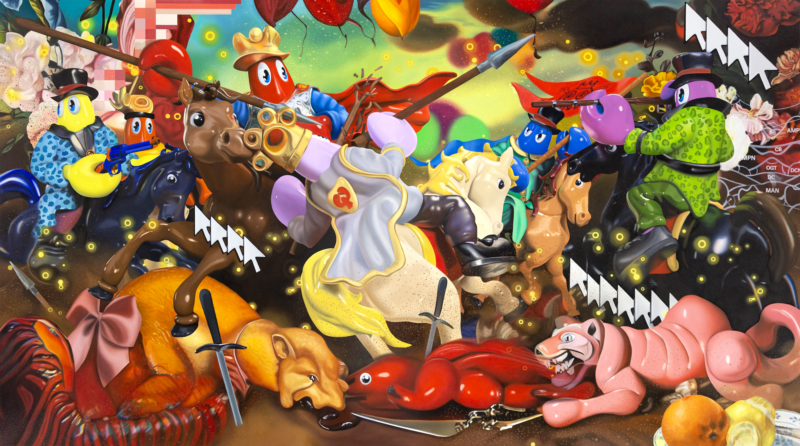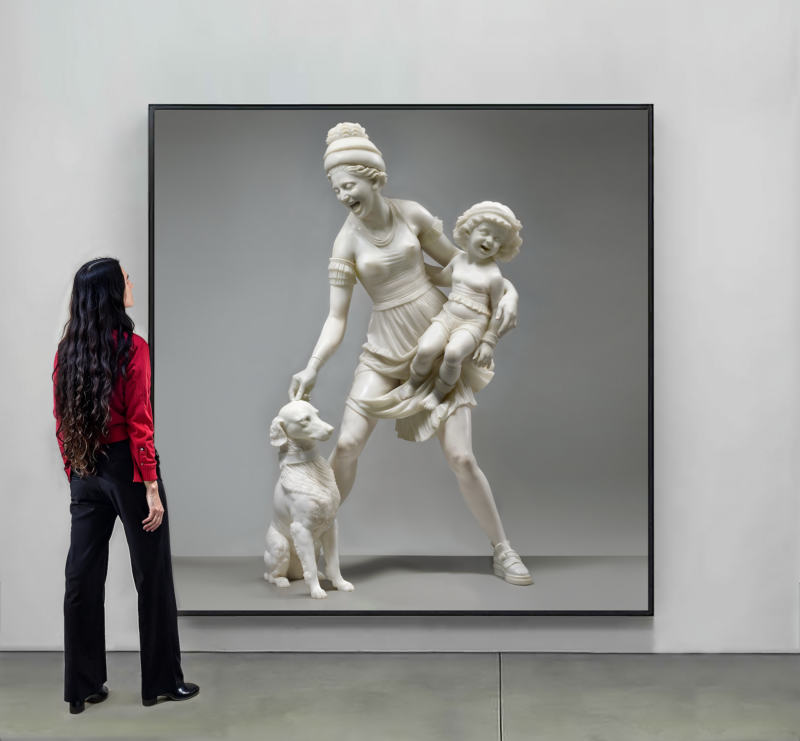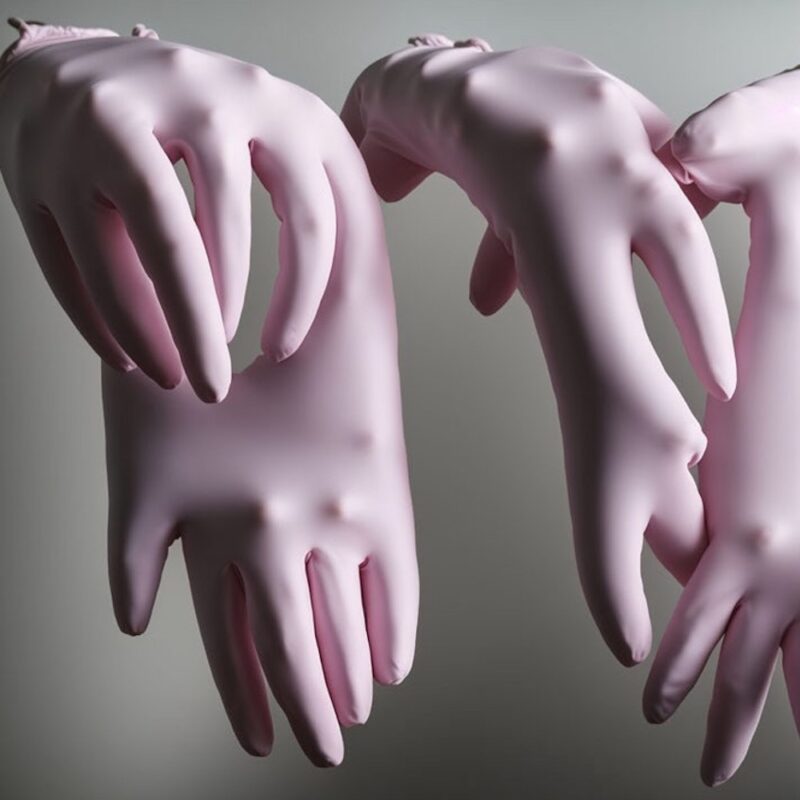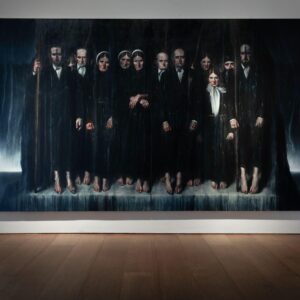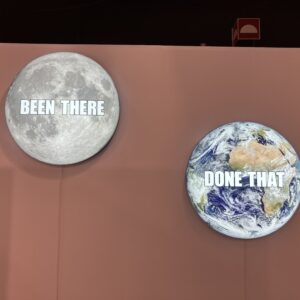KÖNIG GALERIE is a contributor to the international group exhibition REIMAGINE TOMORROW, 1954–2024. AI IN CONTEXT #2, taking place at Heilig Geist, a former church near the Zollverein Coal Mine. The exhibition is presented by EXPANDED.ART as part of the AI Biennale in Essen and curated by Anika Meier.
More than 50 international artists, as well as galleries from LA to Paris to Shanghai—also including the platforms Fellowship and Objkt.com—are invited to explore a near future where humans and machines will become increasingly interconnected.
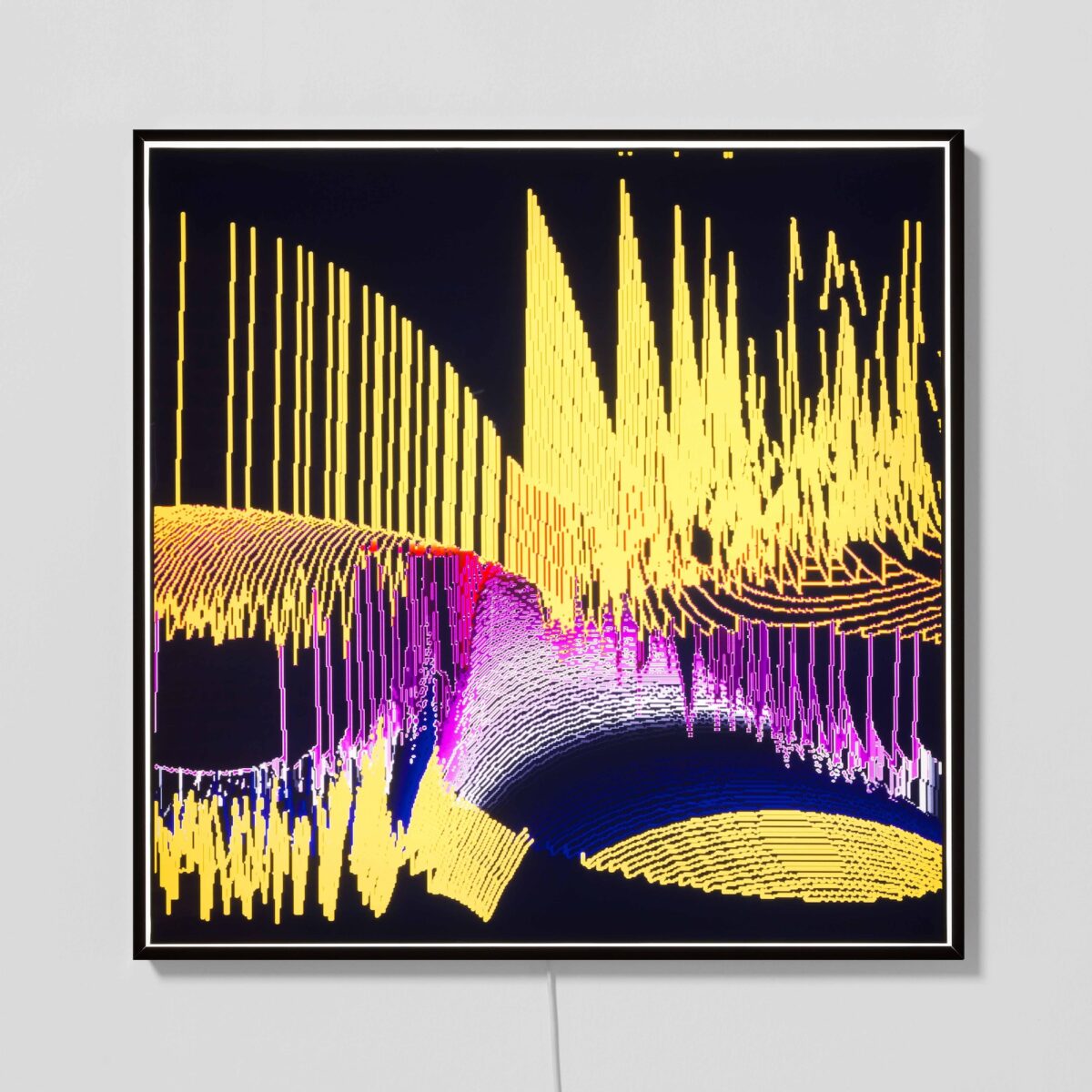
While artists like Herbert W. Franke had to prove in the 1950s that art could be created with machines, machines now create art: such as the decentralized autonomous artist Botto, the painting and drawing robot Ai-Da, and the Chinese-Canadian artist Sougwen Chung collaborating with robots.
Since the 1960s, with the introduction of the term Generative Photography by Gottfried Jäger, artists have not only made photos with a camera but have also generated images. The Generative Photography of that time represented a non-representational position of photography, while Post-Photography today—AI-generated images—creates alternative histories that challenge our belief in images, as Philip Toledano does with ANOTHER AMERICA.
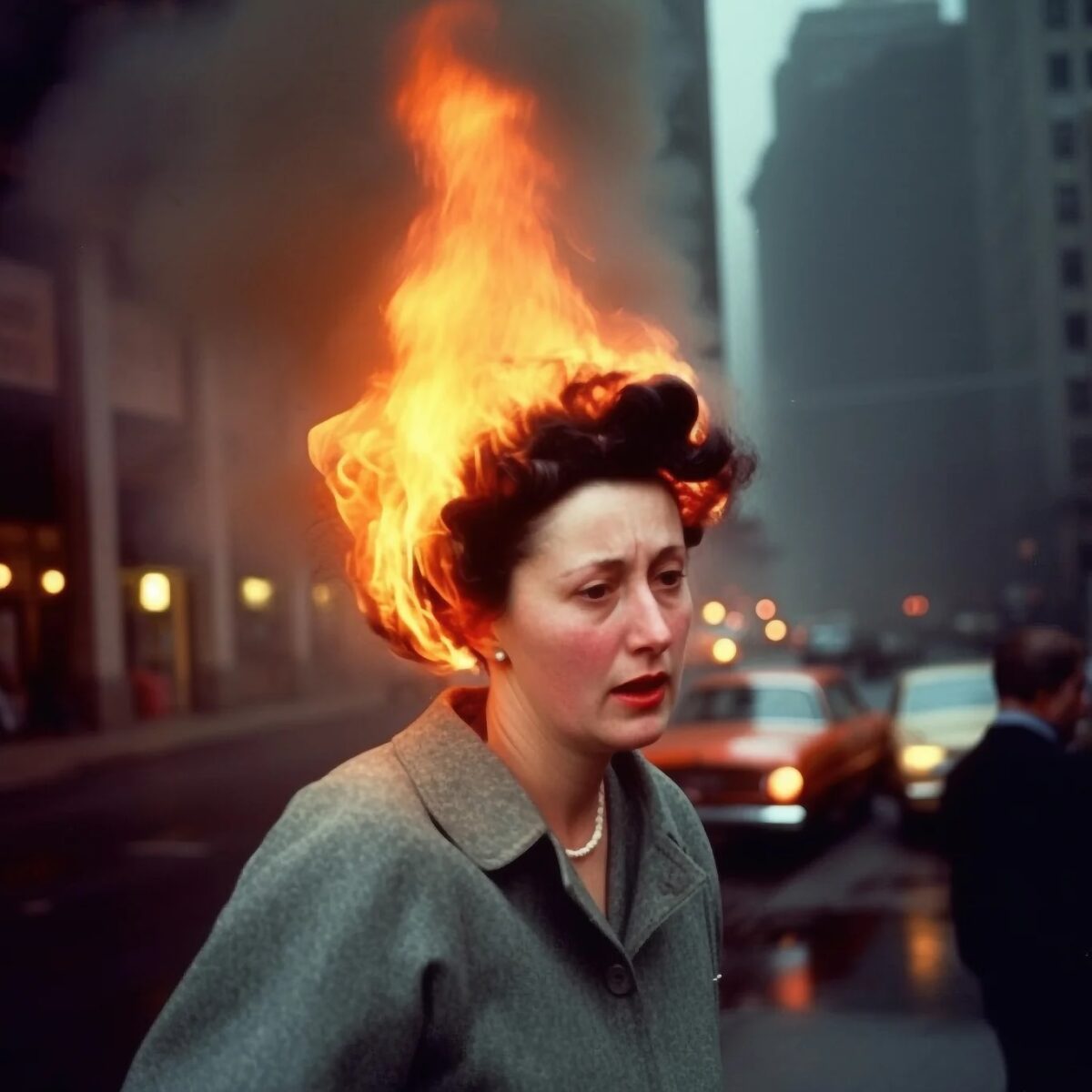
How long is the future?
No one knows for sure. Not even ChatGPT. After Mark Fisher lamented that we can no longer think the future, Douglas Coupland, Shumon Basar, and Hans Ulrich Obrist celebrated the extreme present. And now Elon Musk wants to make life on Mars possible in the near future. Actually, we need a support group to cope with the fact that we cannot endlessly scroll on our smartphones while we sleep.
If you live in the present, as Lynn Hershman Leeson says, most people think you are living in the future because they themselves do not know what happens in their time. This is exactly what artists who work with technology often reflect on. The exhibition REIMAGINE TOMORROW, 195-2024, which is part of the AI Biennale in Essen, traces this path of art and technology from 1954 to the present: from Generative Photography to AI.
Starting in the 1950s, the question of whether machines can think was explored. The philosopher Max Bense called for rational thinking in art a decade later, and artists like Frieder Nake, Herbert W. Franke, and Gottfried Jäger followed him. They thought the image, which was made first by analog machines and then by digital ones.
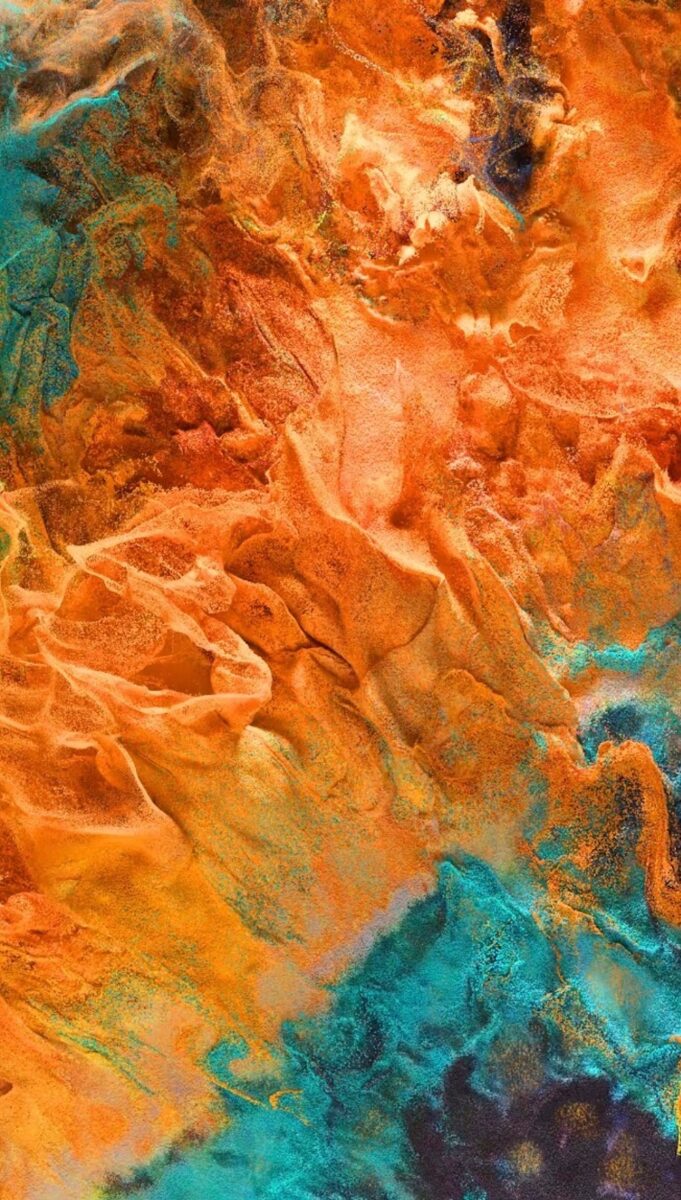
Today, artists are confronted with the intimacy of the screen and the financialization of social relations, with viral moments and felt truths. Digital art must now be not only likeable but also collectible. Machines dream and hallucinate, according to Refik Anadol.
The exhibition REIMAGINE TOMORROW, 1954-2024, showcases a glimpse of how artists work with technology in their time and what happens to art on the path from thinking to hallucinating machines.
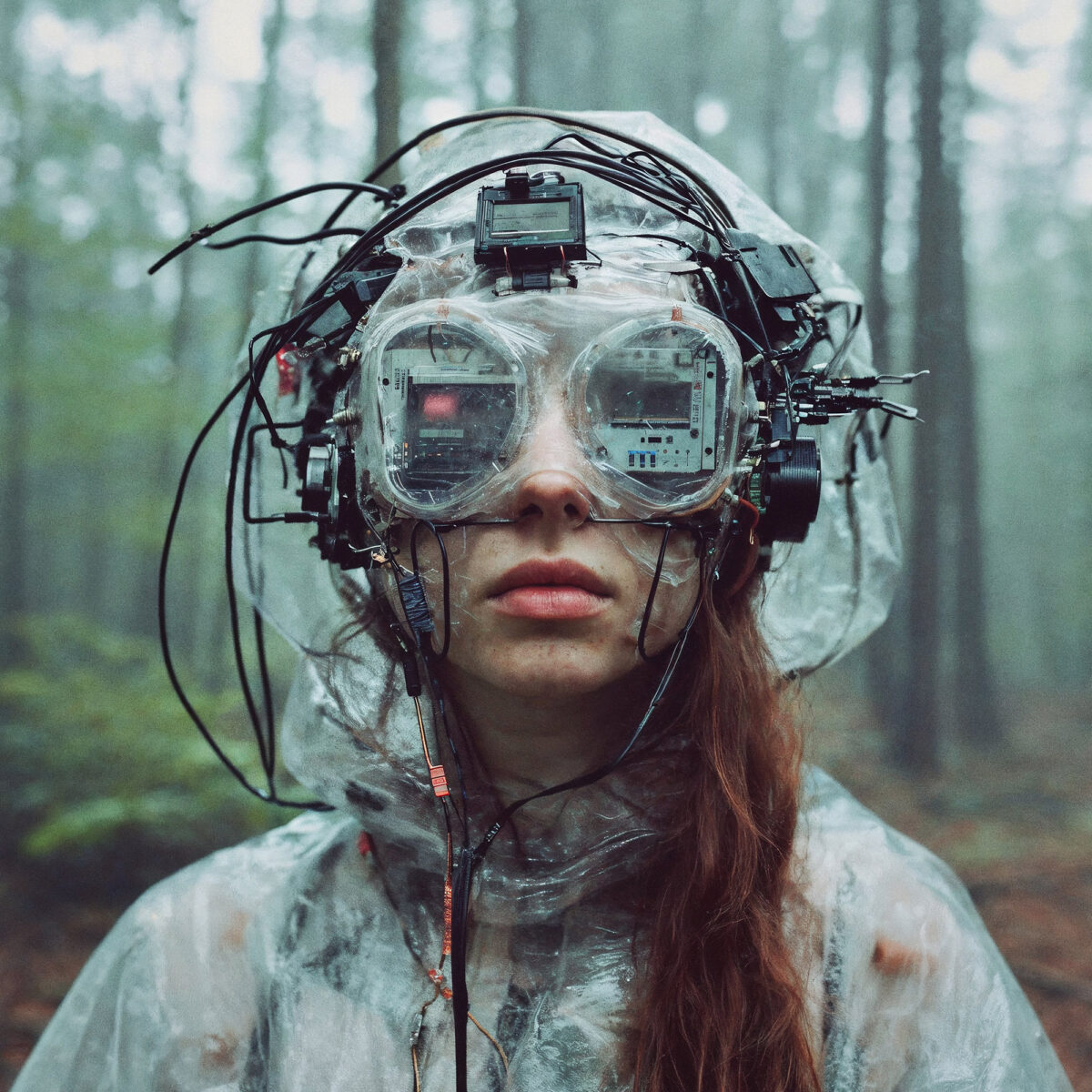
“The wise artist doesn’t fear emergent technology, but rather asks, ‘How can I use this tool in a meaningful way?’ What I find so valuable in AI, and deep-learning algorithms in particular, is its power to surface that which I may not have been able to without assistance. In working intimately with AI, the artist has the opportunity to come under the influence of the machine. This is not a simple transaction from which one walks away unchanged. The machine can teach us a different way of looking at a subject, often leaving us with another understanding and with enhanced sensibilities. We are changed. Indeed, to properly navigate our AI-future, this form of evolution is necessary. Artists and philosophers will be our guides.”
– Kevin Abosch
Contributors
WIth contributions from Fellowship (LA, USA), Photo Edition Berlin (Berlin, Germany), Kate Vass (Zurich, Switzerland), Blueshift by Diane Drubay (Paris, France), Objkt.one, Office Impart (Berlin, Germany), MUD Gallery (Shanghai, China), KÖNIG GALERIE, and more.
Artists: AI
With Ai-Da Robot, Kevin Abosch (Kate Vass), Botto, Kate Armstrong & Michael Tippett, James Bloom, Sougwen Chung, Crosslucid, Mark Dorf (Blueshift), Boris Eldagsen, Far, Amir Fattal (KÖNIG GALERIE), Joan Fontcuberta (Photo Edition Berlin), Aaron Huey, Kalen Iwamoto, Krista Kim, Mario Klingemann, Emi Kusano, William Latham, Element Lee, Jonas Lund (Office Impart), Jennifer & Kevin McCoy, Maria Mavropoulou (KÖNIG GALERIE), Margaret Murphy, Niceaunties (Fellowship), Skye Nicolas, Jurgen Ostarhild, Marcel Schwittlick, Anne Spalter, Sasha Stiles (Objkt.one), Ivona Tau, Phillip Toledano, UBERMORGEN, u2p050, aurèce vettier, Ziyang Wu, and more.
Artists: AI in Context
Herbert W. Franke, Frieder Nake (Photo Edition Berlin), Hein Gravenhorst (Photo Edition Berlin), Monika Fleischmann & Wolfgang Strauss, Tamiko Thiel, Paul Brown, Claudia Hart, Hans Dehlinger, Heinrich Heidersberger, Gottfried Jäger (Photo Edition Berlin), Pierre Cordier (Photo Edition Berlin), Roger Humbert (Photo Edition Berlin), Karl Martin Holzhäuser (Photo Edition Berlin), Vladimir Bona?i? (Photo Edition Berlin), Betha Sarasin, Travess Smalley, Arno Beck, Joachim Bosse, Harto, and more.
curated by Anika Meier
REIMAGINE TOMORROW, 1954–2024 AI IN CONTEXT #2, 17th–24th November 2024,
Heilig Geist Church
Art Opening 17th November 11AM CET – 6PM CET Artists and contributors will be present.
Panel Talk 17th November | 3PM-4 PM CET UNDER THE INFLUENCE OF THE MACHINE FROM GENERATIVE PHOTOGRAPHY TO AI With Kevin Abosch, James Bloom, Boris Eldagsen, Monika Fleischmann, Susanne Päch (Foundation Herbert W. Franke). Moderated by Anika Meier
Part of AI Biennale: AI as a Key to Transformation: Rethinking the Future 18th-22nd November Stiftung Zollverein und Digital Campus Zollverein
About
Heilig Geist Church in Essen, Germany. The architectural concept of the church is characterized by functionality and incorporates design elements of the New Building movement and post-war modernism. The reinforced concrete structure was designed by Gottfried Böhm, who was awarded the internationally renowned Pritzker Prize in 1986 as the first German architect. Throughout his career, Böhm created a total of 69 sacred buildings. The Heilig Geist Church is the first church project that Böhm realized.
He realized the idea of a large tent, which he placed into the industrial environment using glass and concrete. The architecture of the tent, constructed from draped “fabrics,” follows the words of scripture (Heb. 13:14): “For here we have no lasting city, but we seek the city that is to come.”
The Heilig Geist Church, along with the associated community buildings, has been listed as a protected monument since February 7, 2019.
EXPANDED.ART turns Web3 inside out and expands the notion of a gallery and an online platform by being both. The focus is on the history of digital art and on supporting female and non-binary artists. Art is made collectible for everyone by offering NFTs and editions.
EXPANDED.ART presents yesterday’s pioneers and today’s avant-garde.
